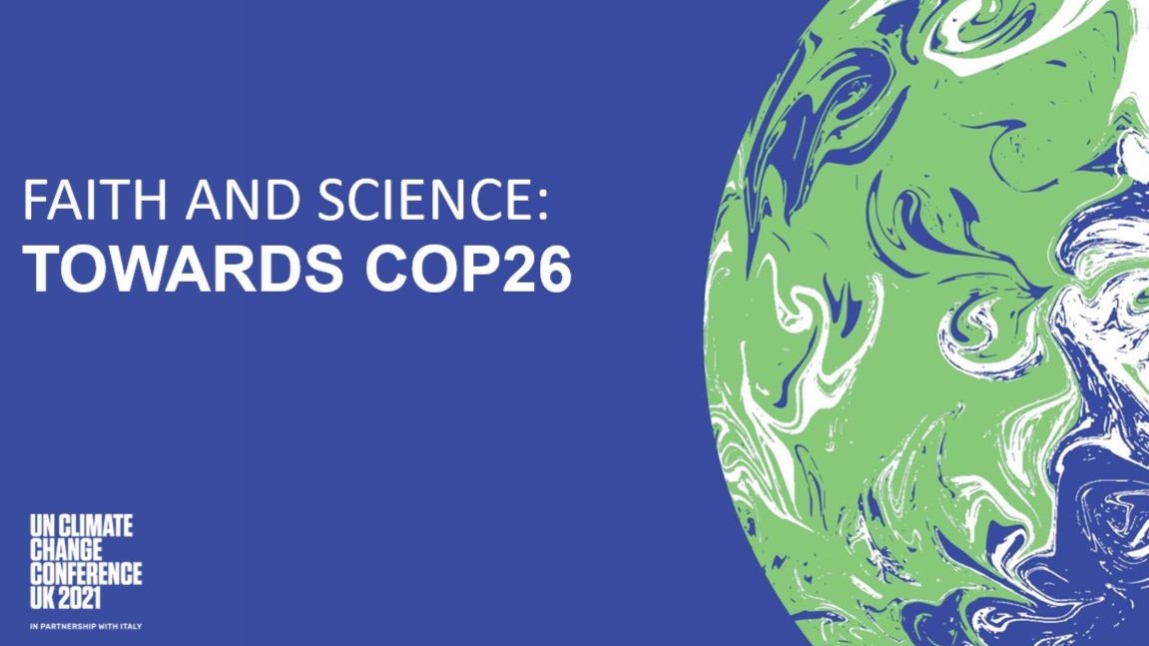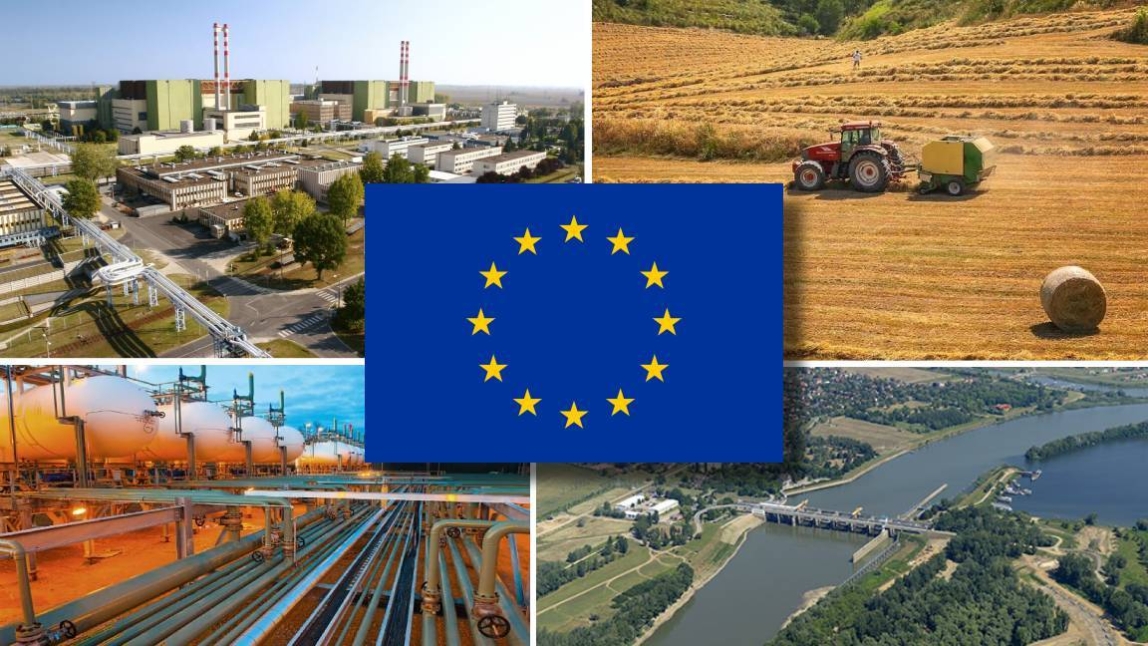The Climate Policy Institute, as a party-overflow, participated at the UN climate summit held in Glasgow. Below is an assessment of the conference and the climate agreement.
The essence of COP26
The aim of the 26th UN Climate Change Conference was to reinforce the key commitments of the Paris Agreement of December 2015 and to set out further concrete actions to fulfill them. Six years ago, nearly 200 countries pledged to keep the average global temperature rise well below 2°C above pre-industrial levels, with a target of 1.5°C. This can best be achieved by emitting only as much greenhouse gases (GHGs), warming our planet, that can be sequestered by nature or by artificial sequestration techniques. This is the only way to achieve the much-talked-about carbon neutrality or climate neutrality. The target set out by the Paris Agreement is to reduce the emissions of these gases by 45 percent by 2030, compared to 2010, and to achieve 100 percent, or climate neutrality by 2050.
Announcements by major powers
The biggest success of the conference was that the world's two biggest GHG emitters, China and the US, despite their differences, agreed to work together in the future to reduce pollution globally, and have started working on the details. Among the major powers, India and Russia have also joined the club of those states that are committed to reduce national GHGs emissions. India and Russia have pledged to be climate neutral by 2070 and 2060 respectively, joining the EU, the US, Japan (by 2050) and China (by 2060), and several other major countries, including Australia and Saudi Arabia, have also set a climate neutrality agenda. Two years ago, when the UK, partnering with Italy, took on the task of organizing COP26, roughly 30 percent of the world's countries had made climate neutrality commitments, which rose to 90 percent by 2021. The 197 countries that signed the final document of the Glasgow climate summit also agreed to revisit their Nationally Determined Contributions (NDCs) in 2022 in view of a possible tightening.
Methane reductions
From the point of view of climate change, methane emitted into the atmosphere is one of the most dangerous GHGs. Methane is present in the atmosphere only in smaller quantities and decomposes faster than carbon dioxide, yet it is responsible for 30 percent of global warming, with an atmospheric impact 23 times greater than CO2. During COP26, 104 countries have promised to cut their emissions by 30 percent by the end of the decade, compared to 2020.
Reducing fossil fuels
The use of Fossil fuel is the biggest source of carbon dioxide emissions. Within this, the combustion of various solid forms of coal (lignite, brown coal, black coal) is the largest atmospheric pollutant. Nevertheless, nearly 40 percent of the world's electricity generation is still based on this source of energy. The commitment to phase out coal-fired power stations was finally left out from the final document and was replaced by a commitment to phase them down. The more radical version of the text failed because of the intervention of India and China, but it did not gain the approval of, among others, Russia, Saudi Arabia and Australia neither. Some were disappointed by the failure to phase out coal completely, while others called COP26 a historic turning point, as this is the first time that coal has been addressed in the final document as a resource to be avoided. There was a moment at the conference when not only the phasing out of coal but also the halt of all financial support for outdated fossil fuel power generation was on the agenda, but in the end, this was not included in the final document. However, a number of countries, including the US, Germany, France, and Spain, made commitments not to provide new direct financial support, by the end of 2022, for international projects that do not combine fossil energy production with environmentally friendly carbon capture technology.
According to the experts of the Climate Policy Institute, the promise to phase out fossil fuels overnight was not yet timely. In recent decades, most of the European countries have not built up sufficient replacement capacity. The energy crisis in Europe has made it clear that, according to the current state of science, fossil fuel, mainly oil and natural gas, remains, at least temporarily, an important energy source. The last few weeks have shown that, although renewables are the future of energy production, for the moment, fossil fuels are indispensable for the economies of the developed Western countries as well.
Intergovernmental alliances and concrete commitments have been made to decommission coal capacities. More than 40 countries, including major coal producers such as Poland, Ukraine, Vietnam and Chile, agreed to phase out their coal plants.
Forest protection
Reducing the level of carbon dioxide is not just about cutting emissions, but also about increasing absorption capacity. At COP26, 137 signatory countries agreed to end drastic forest loss by 2030, with a funding of nearly $20 billion to protect and restore forests. The pledging countries – Canada, Brazil, Russia, China, Indonesia, the Democratic Republic of Congo, the United States and the United Kingdom, among others – account for 85-90 percent of the world's forests or 13 million square kilometers of forested area. As for the European Union, European Commission President Ursula von der Leyen has announced an additional €1 billion for forest protection over the next five years. According to the experts of the Climate Policy Institute, this agreement is the most important outcome of the climate summit, as the visible decline in natural habitats and the drastic loss of species diversity is as much a problem as global warming. The Hungarian climate protection strategy is also in line with the plans. The government would increase the proportion of forests from the current 21 percent to 27 percent by 2030.
Technological innovation
At the conference, great emphasis was placed on research development and technological innovation, which offers the best hope for curbing the negative effects of climate change. Artificial carbon sequestration technology (CCUS), the development of batteries to support the utilization of weather-dependent power plants, or hydrogen technology, which is of strategic importance in Hungary, can all play a major role in the environmental sustainability of our future. An agreement was also signed at COP26 by 40 countries, representing 70 percent of the world's population, to accelerate the delivery of affordable clean technologies by 2030. At the same time, 450 financial institutions adopted a joint statement pledging to finance green and renewable technology innovations while moving away from financing conventional fossil fuel power generation. The first days of the conference also saw the launch of the Adaptation Research Alliance (ARA) that brings together more than 100 education and research institutions from 35 countries to develop green technologies to help mitigate and adapt to climate change. In addition, the EU has announced the EU Catalyst program, which will invest €1 billion in the development and deployment of new green technologies, in partnership with market players and the European Investment Bank. In our views, technical innovation in the service of environmental sustainability, alongside education and knowledge dissemination, can be the main breakthrough point in tackling climate change and the Climate Policy Institute welcomes these agreements.
Increasing funding
The question of the amount of money rich countries give to developing countries has been the most controversial issue at the conference. In 2009, developed countries pledged to give $100 billion a year by 2020 to their less developed counterparts. At COP26, poorer countries complained that the developed world had failed to keep this promise and urged the developed countries to restore credibility and double their finance to help mitigate and adapt to climate change. In the end, the final version of the agreement contains only the task of providing climate finance to developing countries, without specifying the value, which will be decided at a later stage. The lack of transparency and accountability of how the money was spent in many countries made it difficult to reach an agreement. In many cases, there was no agreement between the parties on the purpose of the funds given to the less developed regions. In some text versions, the sum was intended to finance the green transition of a given country. In others, these resources were considered as a kind of reparation to be paid by the more fortunate half of the world because its industrial development had put the less fortunate half at risk.
Lessons learned, conclusions
Rewards and sanctions should be introduced
In addition to the above, COP26 took a number of steps towards achieving the objectives of the Paris Agreement, but it did not bring about any ground-breaking announcements or new developments. This has been criticized by many, and others evaluated and declared the summit pointless even before it reached the half-way mark. The streets surrounding the conference venue were packed with noisy protesters, fiercely demonstrating for the Earth, who were outraged at the failure of the climate summit even before it had begun. Unfortunately, in a larger part of the world, instead of reason, whipped up emotions govern the way the cause of environmental protection is being approached. This leads to pushing for ever more ambitious goals, ignoring the fact that, unlike Hungary, for example, much of the developed world has failed to deliver on its commitments so far.
As the saying goes, a promise made is a promise kept. The most important thing for climate neutrality is not to make new promises, but to keep and enforce the promises we have already made. To improve credibility, the Climate Policy Institute suggests rewarding those who do well on emission reductions and penalize those who do not. In the EU, in the case of those countries where GDP per capita exceeds the EU average but GHG emissions have not fallen as committed, a part of EU green funds could be withheld. Countries where economic performance is below average but GHG levels have been reduced above average could benefit from additional resources. This method would not only be fairer, but also more environmentally sound than the current approach, which does not contain any incentive or disincentive element.
Technology neutrality
The message from COP26 is that the fight against climate change can be won through the effort of all countries. Each country should have the freedom to find its own path towards climate neutrality. A path that requires the least possible social and economic sacrifice while guaranteeing the greatest possible environmental benefit. This approach could also serve as an example for the European Union, which is now campaigning against nuclear energy for political reasons under German pressure.
Higher living standards and green policy
Another important lesson from COP26 is that poorer countries find it harder, richer ones easier to tackle climate change. As living standards rise and economy grows, both public and business sectors become more environmentally aware, more willing to act and more resilient. Although the EU itself accepts that poorer countries should be provided funding to fight climate change, in Europe, it tries to accelerate the green transition by putting forward proposals (see FIT for 55) that are negatively affecting people's financial situation or even reducing the competitiveness of companies (e.g. energy tax, extension of carbon tax to transport and households).




